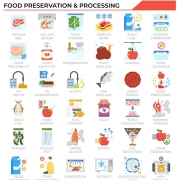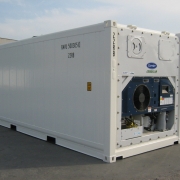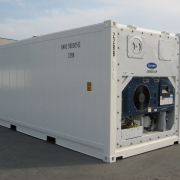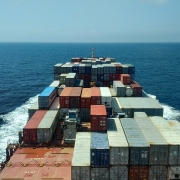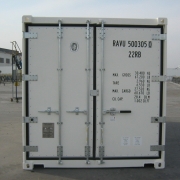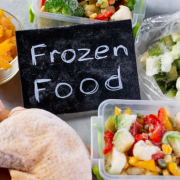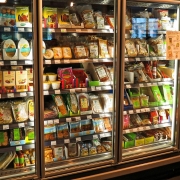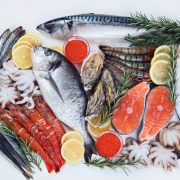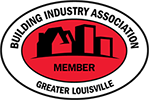Why Do We Have to “Refrigerate After Opening?”
Modern food science is one of the greatest tools that we have; it allows us to store and preserve food much longer than it has been historically, which prevents food waste, saves money, and can cut down the time it takes to make a full meal. Fresh produce and other perishable foods are wonderful and tasty but, with a busy schedule or picky eaters, isn’t always the most convenient. It’s truly a scientific feat that we’re able to stock our shelves with everything from canned corn to cracker-cut salami to pasta sauce and mustard. But how do so many of these products stay good when they’re labeled “Refrigerate After Opening?”
That one little phrase tells us that once a seal is broken, the food will expire within a certain amount of time. What’s so different about the air inside the package and the air outside of it, and what makes the food stay good until it’s opened?
“Refrigerate After Opening” is a compromise when it comes to food preservation, and is a very important detail to look for to avoid getting sick from contaminated food.
Why is Preservation Important?
Preservation works to prolong the life of a food by inhibiting natural processes that spoil the product, mainly microbes and oxidation. Microbes are strains of little organisms that cause illness – what we call food poisoning – such as bacteria, yeast, and fungi that grow in favorable conditions and, when ingested, causes the body to react to the toxins in them. Oxidation occurs when oxygen chemically reacts with enzymes and other chemicals naturally present in foods – mostly fruits and vegetables. This turns fats rancid and causes the breakdown and spoilage of produce.
Preservation doesn’t stop these process, though, they only temporarily halt or slow them. Both refrigeration and the shelf-stable options listed below do this, with shelf-stable methods combined with refrigeration keeping food good the longest. Packaging and preserving food sterilizes the environment around the food and keeps microbes and oxygen out. That’s why it’s imperative to check for holes and tears on “Refrigerate After Opening” products and visual signs, such as physical mold or discoloration!
The Packaging and Preservation Process
Most shelf-stable products are preserved and packaged in a safe way using a variety of different methods! You may have heard of or even preserved food yourself using these methods, including:
- Canning
- Salt Curing
- Smoking
- Drying and Dehydrating
- Vacuum-Sealing
- Pickling
- Preservative Additions
- Nitrogen Flushing
Those last two might sound scary, but they are perfectly safe and FDA approved – many of your favorite dry goods are kept from going stale or spoiling by these methods! The trick to it all, however, is the seal. Whether that’s in a bag, a can, a jar, a bottle, or other, if the product is not sealed correctly, then no matter the additives or preservation method, they will spoil faster than properly sealed foods. Once it’s opened, foods are exposed to oxygen and bacteria that are everywhere, and are subjected to the same treatment as fresh products at this point.
But Why Do Only Some Products Need to Be Refrigerated After Opening?
However, thinking about some preservation methods used historically to keep food, such as salt curing and smoking, they weren’t packaged up, so why can’t all foods work that way? Why do some need refrigeration?
Due to the make up of food and how they react to cooking and preservation methods, not every method works for every type of food. Meats and fish are particularly good items to smoke and cure, but vegetables wouldn’t hold up the same way. Plus, in order to make each product to be what it’s advertised to be, different methods must be utilized. After all, potato chips and dehydrated potatoes are two very different products that are only different because of their cooking and preservation methods, so it matters a lot!
Ultimately, each food will differ in how is reacted to oxidation and microbes and that makes it very important to pay attention to that “Refrigerate After Opening” message printed on the label. Your pepperoni and pesto might keep on your shelf for a while, but once they’re opened, get them into the refrigerator to keep them even longer!
Moon Refrigeration offers refrigerated, walk-in portable reefer containers for your restaurant or business with 20 and 40 foot options, world-class performance, energy efficiency, quiet operation, reliability, and PrimeLINE Technology. We work hard to meet all your short-term and long-term needs, providing fast, reliable, and affordable service at a day’s notice. We proudly serve the Louisville, Southern Indiana, Lexington, and the surrounding regions as one of Kentucky’s largest full-service leasing companies, and can also offer dumpster and portable restroom rentals, trailer leasing, grease trap cleaning, and much more! Interested in getting started? Give us a call or visit our website today!


